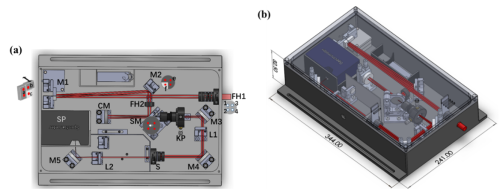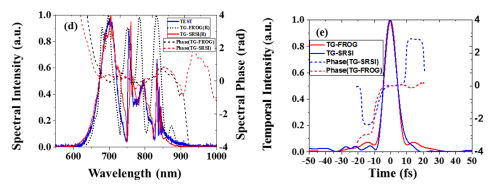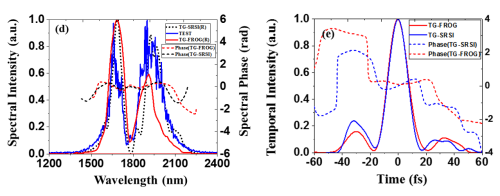Recently, researchers from the Shanghai Institute of Optics and Fine Mechanics (SIOM) of the Chinese Academy of Sciences (CAS) have developed a simple device called FASI (frequency-resolved optical gating and self-referenced spectral interferometry), which combines the FROG and SRSI in a single device based on the same third-order nonlinear effect of the transient grating (TG). The result was published in Optics & Laser Technology in May 2021.
Frequency-resolved optical gating (FROG) is the first technique that emerged to realize the full measurement of the intensity and phase of ultrashort laser pulses in 1993, and has been one of the most widely used techniques so far.
Self-referenced spectral interferometry (SRSI) is another fresh characterization technique with attractive capacity introduced in 2010.
However, the spectrum of the SRSI reference pulse must be wider than that of the test pulse for a correct pulse characterization, which restricts SRSI to the characterization of well compressed, or even the near Fourier-transform-limited pulses.
In this study, researchers developed a novel simple device FASI (frequency- resolved optical gating and self-referenced spectral interferometry), which combines the FROG and SRSI in a single device, and both of them are based on the third-order nonlinear effect of TG. The de-vice own the advantages of the TG-SRSI method, which can characterize few-cycle pulses with broad spectral range from UV to mid-IR in single-shot mode for well compressed pulses.
What’s more, for complex or large chirped pulses, the device can also complete the characterization task by using the multi-shot TG-FROG mode. Researchers successfully used the developed FASI device to characterize two few-cycle pulses centered at 800 nm and 1800 nm to verify its ability. It turned out that the device is a powerful tool for ultrashort laser pulses characterization as it owns the full advantages of the SRSI method and can also characterize complex or large chirped pulses by using the multi-shot TG-FROG mode.
This work was supported by the Natural Science Foundation of Shanghai, the National Natural Science Foundation of China (NSFC), the Instrument Developing Project of the Chinese Academy of Sciences, the Strategic Priority Research Program of the Chinese Academy of Sciences, the Shanghai Municipal Science and Technology Major Project.

Fig. 1. the layout of the FASI device. (Image by SIOM)

Fig. 2. the characterization results of a pulse centered at 800 nm. (Image by SIOM)

Fig. 3. the characterization results of a pulse centered at 1800 nm. (Image by SIOM)
Article website:
https://doi.org/10.1016/j.optlastec.2020.106810
Contact:
WU Xiufeng
General Administrative Office
Shanghai Institute of Optics and Fine Mechanics, CAS
Email: xfwu@siom.ac.cn
Web: http://english.siom.cas.cn/